When we came to hospital, we were first put into a general ward with four other kids. Michael Jr was put on a drip with saline and antibiotic. He felt so bad by the time that he could only groan quietly. Nervous Helen couldn’t leave him even for a minute and stayed by his side all the time.
The doctors tried to settle on the diagnosis and suggested everything, including the banal flu, but they weren’t able to make up their mind. They said that they need at least five days from the beginning of an illness to make a precise diagnosis – be that Kawasaki syndrome or any other disease. It was very hard to wait, as we saw how our baby’s condition got worse and worse.
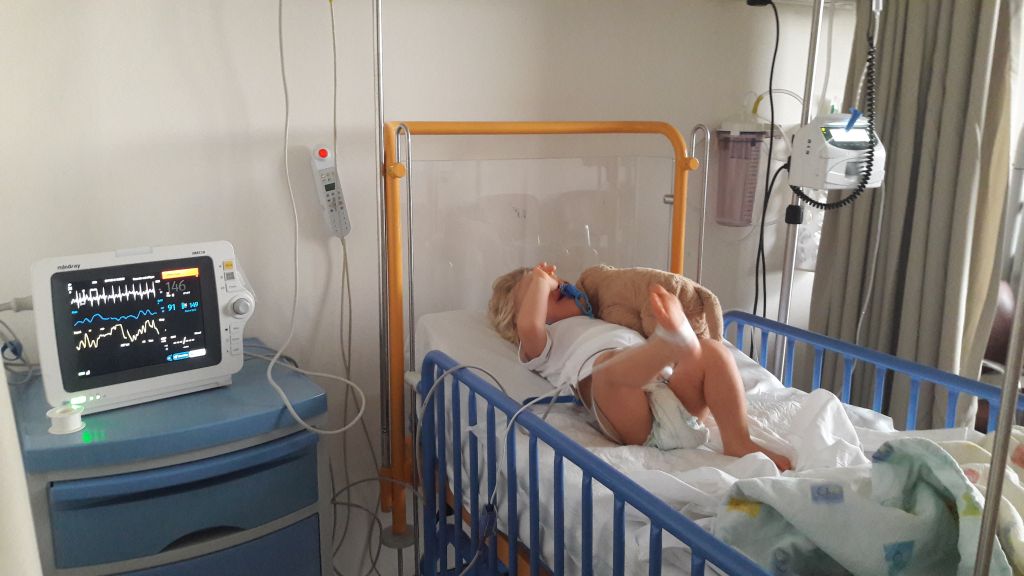
Peak of the disease. The kid was constantly crying or moaning quietly
Bearing in mind the possibility of Kawasaki syndrome, we ourselves began to study the information on the disease. We’ve read everything we could find about it. First, we wanted to make sure that it’s not it, second, we needed to be aware of all possible symptoms so as not to miss the appearance of them. The difficulty in diagnosing is that the disease hardly manifests itself in the beginning, and tests don’t show anything. But we saw that the prescribed treatment didn’t work, which meant that it wasn’t a common URTI that Michael Jr suffered from.
On the fifth day, Michael Jr got seriously worse, therefore the ambulance took us to Nicosia, to the main children’s hospital in Cyprus. An urgent electrocardiogram and cardiac ultrasound were required to exclude the damage of heart vessels that is often found in the case of Kawasaki syndrome.
To our huge relief, there were no alterations to the heart, and we were sent back to Larnaca. Suddenly Helen noticed that Michael Jr’s fingers started to swell up. She notified doctors of that, but didn’t get any response. The misunderstanding might have happened due to a language barrier – Helen spoke English, while the doctors spoke Greek. In the evening, Michael Sr came back and had to talk persistently to the doctors himself so that they paid attention to new symptoms.
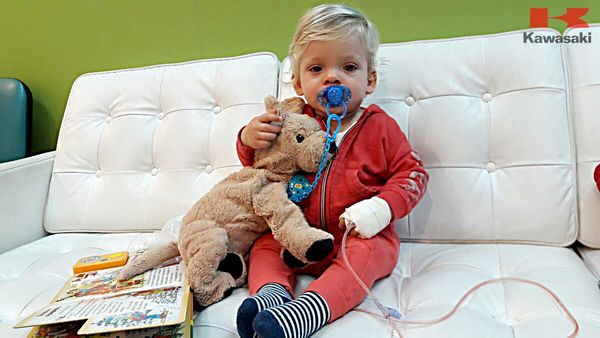
The hospital in Nicosia, where we were brought for urgent heart check
We knew that if Michael Jr really had Kawasaki disease, it meant that the risk of complications increased every hour. The doctors, however, insisted that it’s a viral infection and continued to give the child antibiotic injections. From their point of view, it was the rightest way of handling the condition, although antibiotics are powerless against viruses. And in the case of Kawasaki disease, they can even exacerbate the sick man’s condition. The baby’s organism was very weak even without the excessive use of antibiotics. He was lying still, didn’t move, couldn’t eat, drink, wasn’t able even to speak or emit any sound. To top it all, he was injected with antibiotics that only harmed in the case.
On the day, when our son’s fingers began to swell and we found out that the white blood cell count increased, Michael Sr rushed to doctors, ”The fingers puffed up…” To which they responded, ”So what?” So what?? How can they possibly react like this? Another symptom has just appeared, which is the fifth one already! When I said that to them, the doctors wrinkled up and smirked, ”You read it on the internet, didn’t you?”
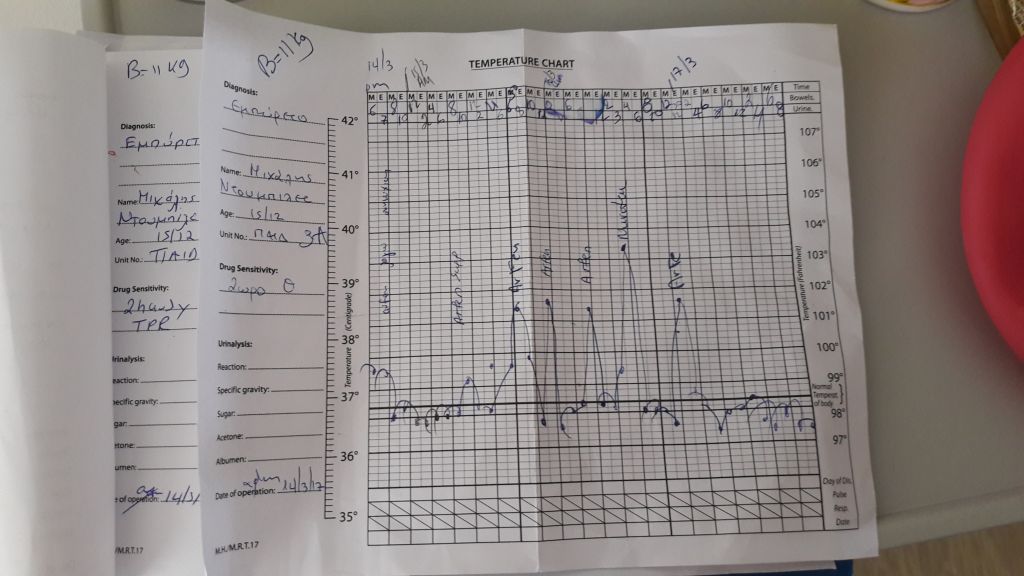
Of course, we read. Our child has been almost at death’s door for several days, so we surely went out of our way to find as much information about the probable disease as possible to understand what’s going on and what consequences it has. We were shocked and enraged that the doctors react so calmly to the appearance of the new symptom. After Michael Sr talked to the doctors persistently, they promised to look into the matter and take the new symptom into account. Not that we calmed down, but we did everything we could, at least made the doctors ”stir” a bit.
That day, Helen and our son were still in the general ward for five people. And suddenly, right after Michael went home, some sort of fuss began. Helen and Michael Jr were put into a separate ward – closed isolation ward.
That’s ridiculous. Do they not care that Helen and little Michael Jr lay in the general ward with other kids for as much as three days? Is it not late to remember about quarantine? As soon as the likelihood of Kawasaki syndrome started to rise drastically, the doctors thought about isolation. In our opinion, when there’s a patient having something similar to Kawasaki disease, they must be isolated immediately to exclude the illness. After that, doctors can calmly determine the diagnosis and perform treatment. Furthermore, when we were at the hospital, there were a lot of empty wards.
And Michael Jr was allowed to spend three days with other children that were not that little. His ward neighbours had just ailments, nothing serious, so they ran around, played, and shouted – in a word, they behaved like kids.
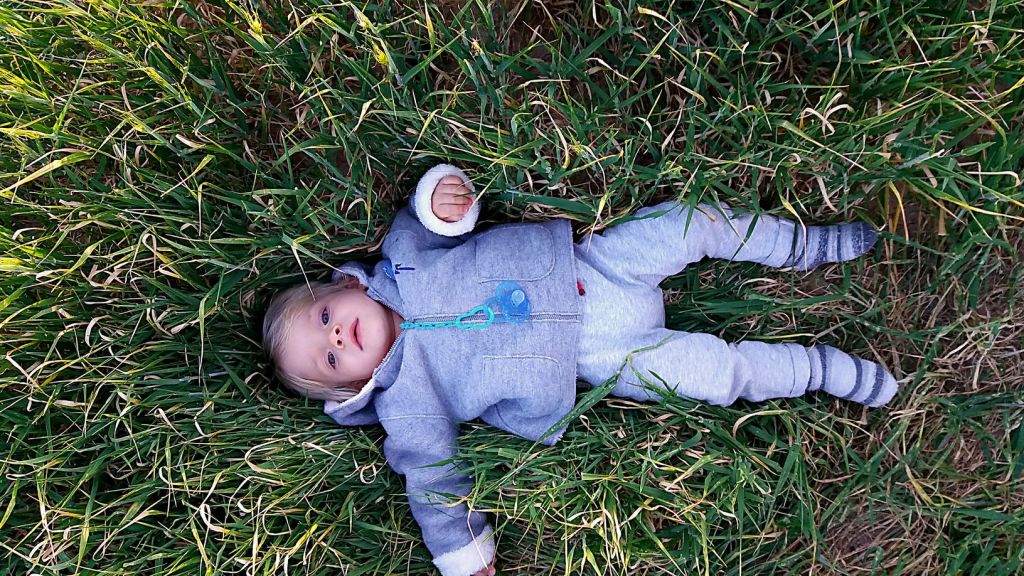
One of the first walks after discharge from the hospital. The baby is still a little pale, but already quite healthy!
No one was let into the ward that Michael Jr and Helen had been sent to. Even the ones who spent the three days in the general ward with them (many worried about Michael Jr’s condition and wanted to see him) were not an exception.
It was strange to watch the doctors’ actions. It turned out they were completely unprepared for the situation, because they simply hadn’t come across the illness before. They had to read directions for use before applying the medication – how much and how often it should be injected. We needed intravenous gamma globulin which is a rare but efficient drug. It’s often abbreviated to IVIG and contains immunoglobulins G. The drug is made from human plasma taken from thousands of donors. It’s an expensive drug, and it’s used only when there’s no other way to cure the patient.
Michael Jr was finally put on a gamma globulin drip and was given aspirin. Children are not usually treated with aspirin, but it’s necessary in the case of Kawasaki disease, as it reduces the risk of blood clot formation.
As soon as immunoglobulin flowed to the child’s blood, some magical changes started to be observed. We still vivdly remember how it was.
Michael Jr has been on a drip for just twenty minutes. He was lying, Helen was beside him prostrate with the inability to help her son in any way and ease his suffering continuing for five days. The diagnosis of Kawasaki disease was confirmed, which, on the one hand, was a relief as it’s now clear what we are dealing with and what we need to fight. On the other hand, we hoped so much that we wouldn’t have to face the disease.
A nurse comes in and brings food for Michael Jr. It’s potato mash and a piece of chicken. Helen tells her, “The child hasn’t eaten for five days, it’s painful for him to swallow.” The woman answers that she would leave the plate, and we would then decide ourselves whether to feed him or not.
A couple of minutes pass, and suddenly Michael Jr raises his head, points to the plate, and says, “Yum!” Helen was taken aback, but certainly tried to feed him. She expected him to eat several spoons and refuse to eat more again. However, to her surprise, the toddler, who was lying without movement just half an hour ago, ate the half of a large serving of potato mash and gobbled up the meat. We could literally see how he got better!
The doctor and a nurse that entered the ward were stunned by such a dramatic change of the child’s condition. All doctors in the hospital gathered here to witness the miracle. They were surely incredibly impressed by what was going on, as most of them saw the disease for the first time.
An hour after dinner, Michael Jr was already on his feet, another two hours after, he already had a lot of fun jumping on the bed. The fever was falling quickly, the symptoms were getting weaker. He got wildly hungry and began making up for the days of the forced abstention from food.
That same day, Michael Jr started to feel much better, his condition improved, and he was able to fall asleep well in the evening. A miracle was unfolding before us. And it’s no exaggeration. The child had literally been fading for five days, didn’t respond to anything, so it seemed there’s nothing and no one to help him. And suddenly, we see this magical healing, as if he had been injected with life, not immunoglobulin.
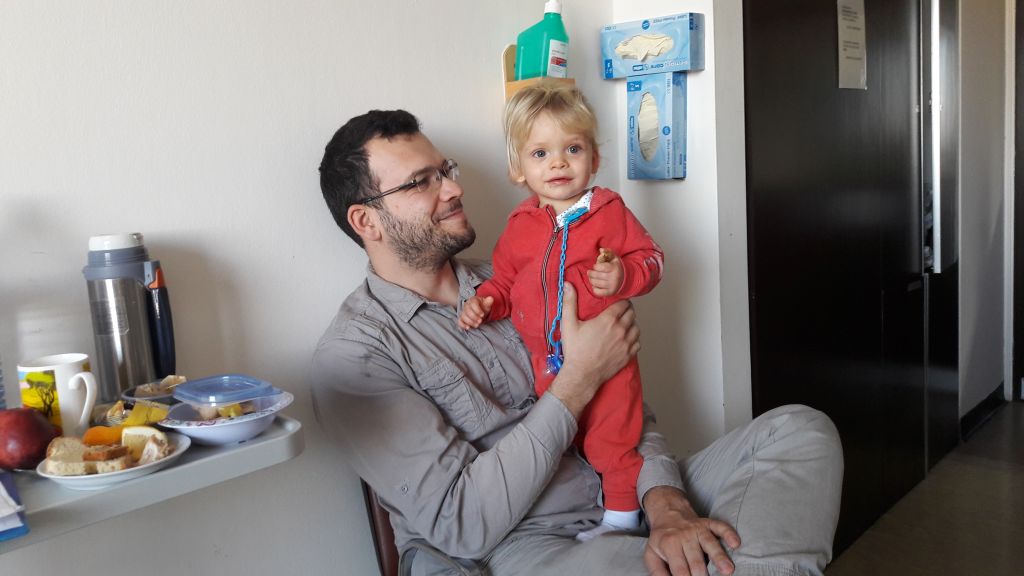
The day after the start of magic treatment
He was on a drip two days more. The doctors stuck to the usual scheme and continued to treat him with antibiotics, though we were outraged. Kawasaki disease was diagnosed, and in the case of the syndrome, antibiotics are useless and even harmful. Nevertheless, the doctors insisted that they need to finish the treatment, because it was already started. Only when we began to quarrel, they stopped the antibiotic treatment.
When Michael Jr got ill, Helen’s mother came to our rescue and stayed with Robert – the only child in the house for some time – during all this time. Michael Sr was surprised and pleased to point out that the toddler behaved perfectly all the time – he didn’t grizzle or shout, ate everything he was given, went to bed on time. We joked, “Robert must demonstrate how obedient he could be if he were our only son.”
When Michael Jr was finally discharged from hospital and came back home, he was so elated that he was grinning all the time during the first days. We were over the moon to see our darling in good health. We all breathed a sigh of relief. Helen tried to recover after terrible worries and sleepless nights spent in the hospital beside her son.
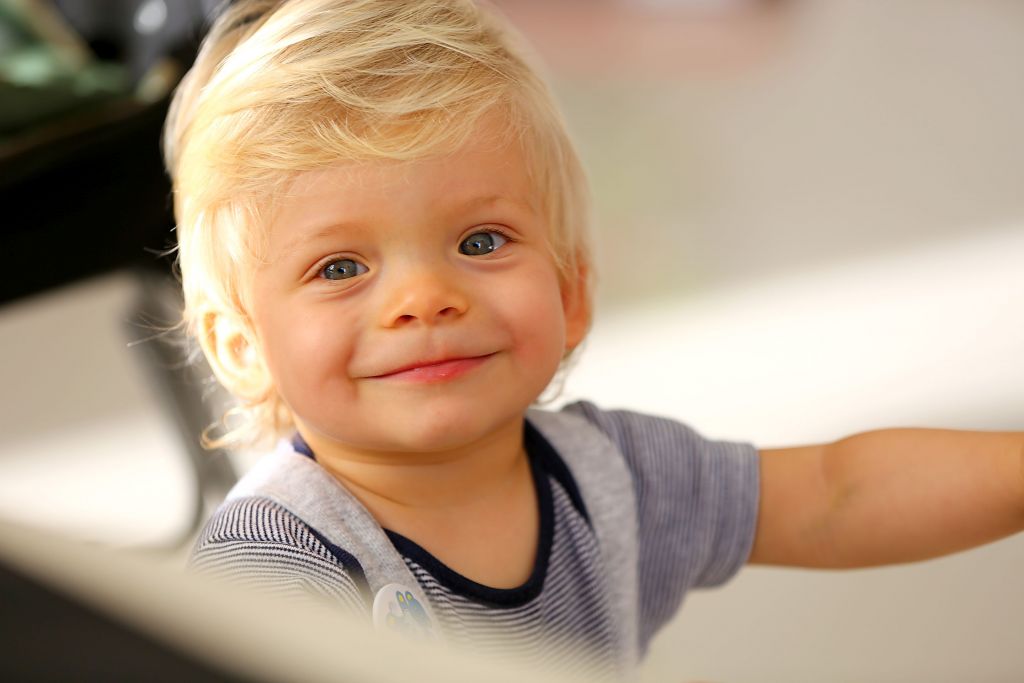
Michael Jr. was so happy with his recovery and returning home that a wide smile never left his face from morning to evening!
The doctors said that we should keep an eye on our child – follow the prescribed treatment, limit physical activity, and avoid fatigue. We needed to give him aspirin regularly, because the doctors recommended to take it for a month or even longer.
However, things didn’t go that smoothly. The very first evening of our return brought new concerns. Our second boy had a high fever, and his lymph nodes swelled up. We got really worried, although we knew that Kawasaki disease is considered to be non-contagious. But after everything we went through, we suspected something wrong was going on.
Next morning, we went to our paediatrician who had made a right diagnosis to Michael Jr in the very beginning. She examined Robert and calmed us saying, “It’s just an unfortunate coincidence. It’s an ordinary virus. There’s nothing to worry about.” She prescribed antibiotics and told us that Robert would be soon up and about. After three days of treatment, his condition really got better and he started to recover very quickly.
How did “our” Kawasaki develop further? Over the last decades, doctors gained the necessary experience in treating the acute condition, when the sick need to be injected with human gamma globulin urgently. But that’s not the end of it. The acute phase lasts for a short period of time only and goes away in the case of the right treatment. And then a phase of long rehabilitation commences, when it’s crucial to perform supporting preventive therapy and constantly observe the condition of vessels and heart. Michael Jr had to undergo cardiac ultrasound first twice a month, then once a month, and finally twice a year.
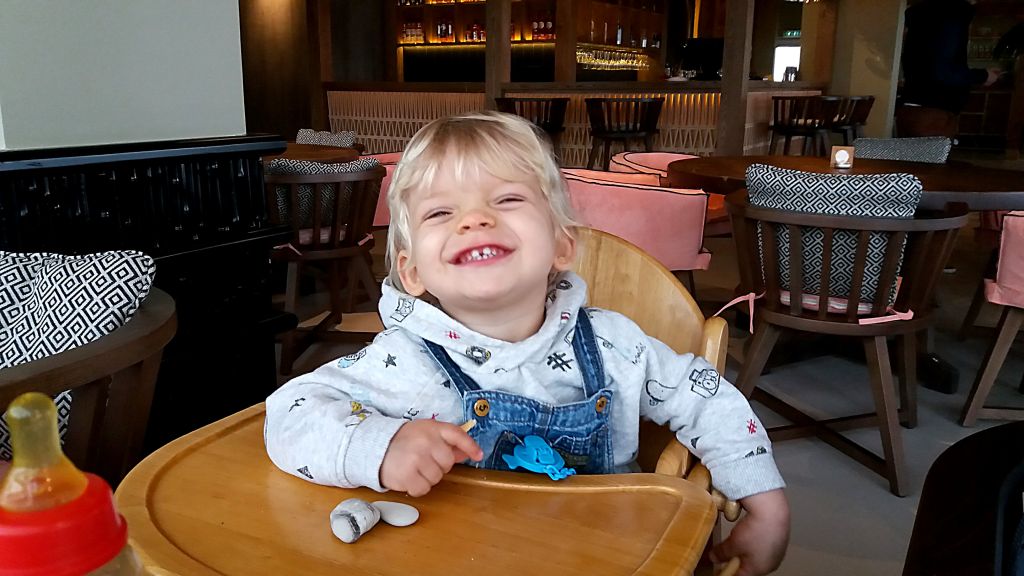
Seeing a healthy Michael Jr. – it brought us great pleasure.
The thing is, depending on the severity of Kawasaki disease and the degree to which the disease affected the heart, there are three conditions following the illness. These conditions vary in duration and risk for health.
The first and most severe condition is when all physical exercises are forbidden, so the person can’t live a full life, because they need to protect their heart from numerous risks and dangers. It’s even scary to imagine what it means to come through an illness at the age of eighteen months that will burden the person for the rest of their life.
The consequences of the disease may show up anytime, even in the adolescence, in the form of heartaches after excessive physical or sport activity. The late clinical complications include a range of heart diseases – from a heart attack to coronary artery disease. Each of the complications can be fatal.
The second condition is much less severe. Here physical exercises are possible, but the person should have regular medical check-ups, watch the state of their health themselves, and use other preventive measures. As a result, the person can’t fully calm down and do whatever they want.
In the third case, there are no consequences and complications after the disease, so there’s no need to follow any specific safety measures. Fortunately, that was our case. Michael Jr’s disease went away like this, without a trace. His heart was examined two weeks after, a month after, but no problems or abnormalities were found. Doctors share the view that if there’s nothing now, it’s unlikely any complications will appear in the future.
The statistics gathered over the years of studying the disease shows that in Japan, there are 200 cases in 100,000 children, in China and Korea, two times less, i.e. 100-110 cases. In the USA, the disease appears ten times rarer – 10-20 cases, while in Europe, the figure is thirty times smaller than in Japan.
We’re lucky that we met a doctor in Nicosia who had already come across Kawasaki syndrome during his practice. If we had arrived at a hospital where no one had got such an experience, we would have probably missed the right moment and wouldn’t have paid attention to the ominous symptoms. Michael Jr would have continued to be treated with usual medication until the external signs of the illness had disappeared. That’s the main reason for severity of the disease and further complications.
Despite several dreadful days filled with grave concerns, it all ended quite fast and, fortunately, Michael Jr recovered from the illness without any consequences. When we have to tell someone about the disease, we repeat over and over again that a timely diagnosis played a crucial role in the favourable outcome.
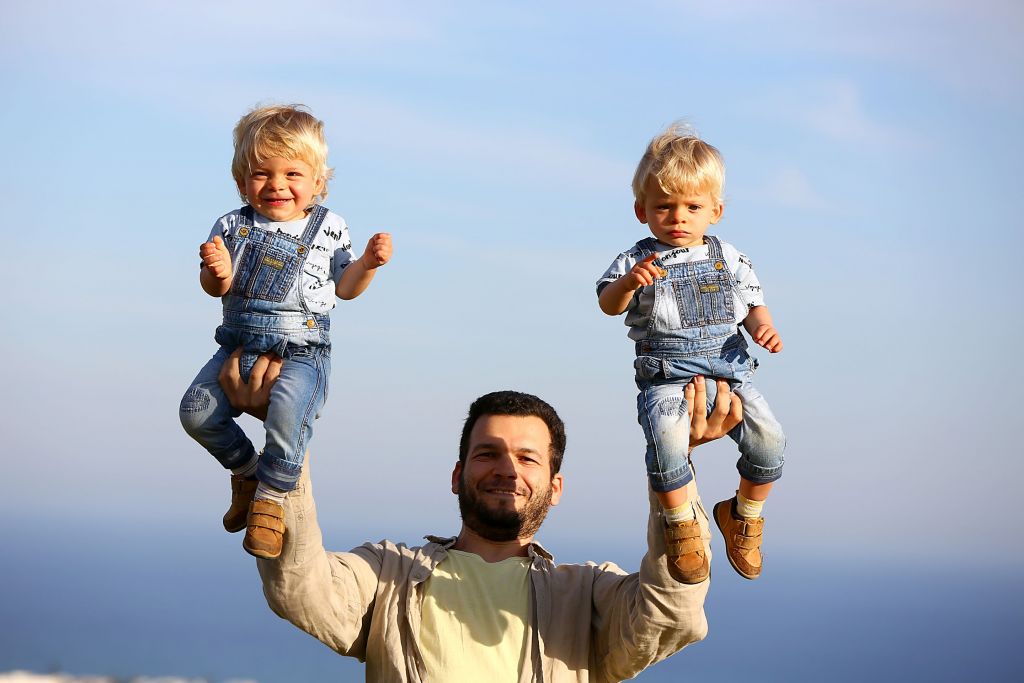
How we treated a rare disease in Cyprus: Kawasaki disease. Part 1

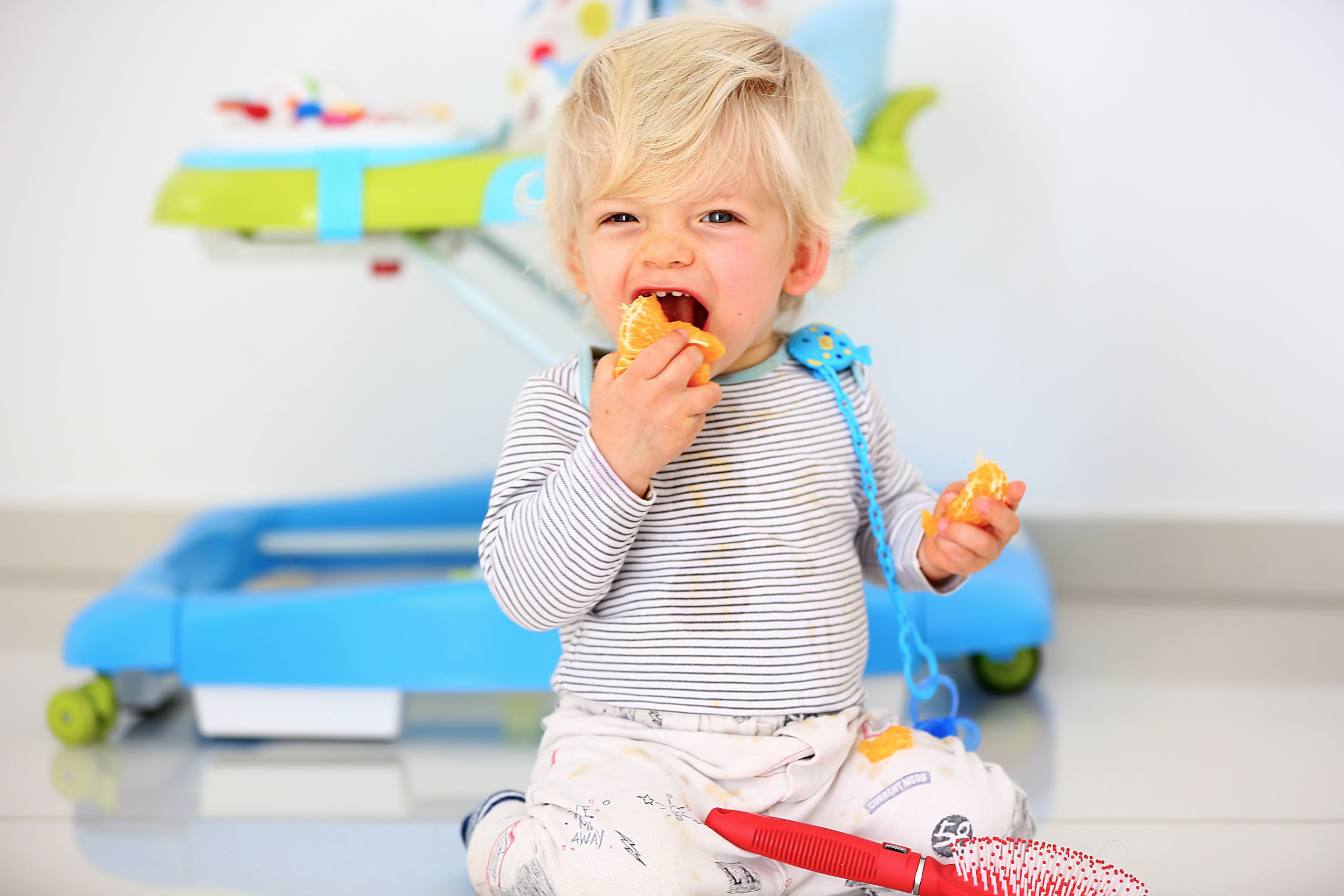




Leave A Comment